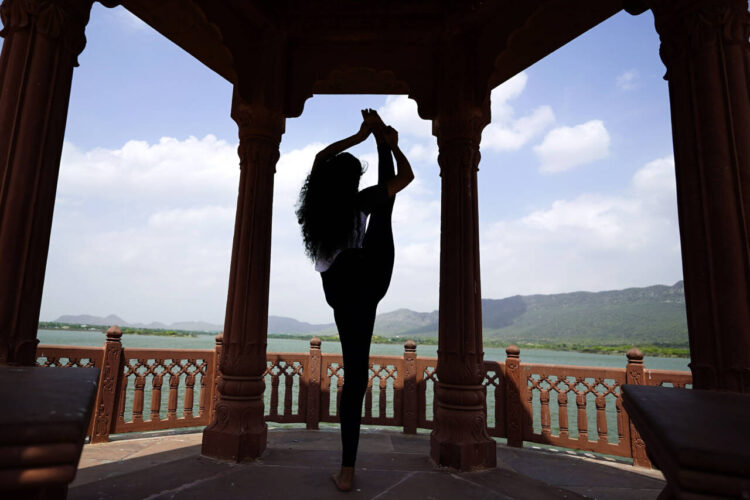For most of us, Yoga is conceived as a method of therapy or exercise system essential for the fitness of the body and overall health in general. Although Yoga undoubtedly enhances one’s physical and mental health, that is just a part; Yoga’s main aim is to be in harmony with the universe. It is the technology through which one can align his or her geometry with the cosmic, to achieve the highest level of perception and harmony.
Yoga’s origin goes back over 5000 years to Northern India. The word ‘Yoga’ was first seen in the Rig Veda. The Rig Veda is the first of the four Vedas, which are the written sacred texts in Sanskrit. The word yoga is derived from the Sanskrit word, ‘Yuj,’ meaning ‘to unite’. The practice of yoga is believed to have originated even before religious or belief systems. Lord Shiva is seen as the first Yogi or Adiyogi and the first Guru or the Adi Guru.
The practice of Yoga does not focus on the outward. It is subtle in its approach. Though based on primary steps of focusing on breathing, flexibility, and strength, at its core it focuses on enhancing your spiritual health.
There is a misconception regarding Yoga, which entails that it is only confined to Hatha Yoga and Asanas (Postures). However, in the detailed list of Yoga Sutras, just three Sutras are allocated for Asanas. Technically, Hatha Yoga is the preparatory process so that the body can sustain higher levels of energy. The steps begin from the body, then the breath, the mind, and finally leading to the inner self.
Yoga does not belong to any particular religion, belief system, or community. It was always a universal method to achieve inner well-being. Anyone can benefit from yoga regardless of one’s faith, ethnicity, or culture. The various Traditional Schools of Yoga, their different philosophies, traditions, the various forms of Guru-Shishya Paramparas (relationships of teachers and disciples) have affected how Yoga has evolved throughout various periods in time. Jnana Yoga, Bhakti Yoga, Karma-Yoga, Dhyana Yoga, Patanjali Yoga, Kundalini Yoga, Hatha Yoga, Mantra Yoga, Laya Yoga, and a few more are different in their approaches and methods.
Yoga, which was previously confined as a typical Hindu tradition, has been accepted and celebrated as a worldwide phenomenon. The practice of Yoga spanned its branches in the world from a long time back. In modern times, Swami Vivekananda is one of the major entities who played an important part in introducing Yoga to the West. His book Raja Yoga carved out to be one of the most impactful sources for Western understanding of what Yoga is.
In the present day, Yoga education is an active form of learning which is practiced as courses in Yoga Institutions, Yoga Colleges, Yoga Universities, Yoga Departments in the Universities, in Naturopathy colleges, and private trusts and societies. Medical professionals also have raised the importance of imbibing Yoga in daily life.
When Indian Prime Minister Narendra Modi acted to declare June 21 as International Day for Yoga in 2015, many critics saw it as a wider political agenda, a tactic, but in no time millions of people from 100 countries took it in their schedule and rolled out their Yoga mats to follow a thousand-year-old tradition.
Prime Minister Narendra Modi has led various efforts to promote yoga as a daily practice. Due to his emphasis, people are starting to understand it as an important part of India’s history and culture.
Yoga is universal and very personal at the same time. It is a unique method through which a person connects to his or her surroundings from inward. It inculcates a healthy relationship between the mind and body, man and nature.

















Comments